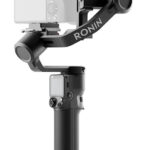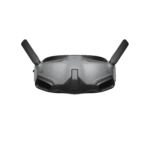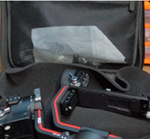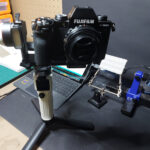You may have heard a lot about gimbals over the last few years but wondered if a) you need one and b) what sort you do need if you think you could use one. Let’s face it, between the leaders in this market, DJI and Zhiyun, there is a plethora of models to choose from.
To break that conundrum into simple terms, there are effectively three type of gimbal; ones designed for smartphones at the lower end, models for bigger cameras such as the Canon EOS R1or similar units from the likes of Panasonic, Nikon, Sony etc and the top end, and in the middle, for mid-range mirrorless cameras like my Fujifilm X-S10 or something like the Nikon Z8 or Canon EOS R5 say.
The DJI RS 4 Mini fits into the latter category, and my review unit was the “Combo” version that includes an extra handle for better comfort when shooting lower to the ground, and additionally, a Tracking Module that, well, tracks subjects and works in a similar way to the tracking in the recently reviewed Osmo 7 from DJI or the CQ5 from Zhiyun, being activated via hand gestures. DJI also make a base model without the extra handle or tracking facility.
The RS 4 Mini does come with a smartphone attachment by the way.
One thing I noticed about the RS 4 Mini straight away is that you need to keep your choice of lens as short as possible; a longer lens can be too front heavy and make balancing the system a major chore if not downright impossible, and obviously it is paramount to a gimbal’s operation that it is balanced correctly.
Setup

Unlike other gimbals I have tested, whilst an optional app may be available to control it, the RS 4 Mini actually needs the DJI Ronin app so it can be activated before using it. It of course also does allow you to control fine tuning plus is used to update the gimbal’s firmware.
The app is downloaded from the DJI website – DJI apps on Google Play are often dodgy for some reason – and occasionally, this can be a hit and miss affair needing a couple of attempts. I already had the app installed but it needed an update and thankfully this time around it was a painless operation.
As per all gimbals, as mentioned, you will need to balance the RS 4 Mini, but it is easier than many as the movement along the axis is a lot more fluid and not at all on the stiff side like others I have reviewed. On the tilt and roll arms, reminiscent of an earlier model, DJI have used a thumb dial to make finding the centre of gravity even easier and more accurate.
It took me about 5 minutes to get a decent balance with the Fujifilm X-S10 and a 27mm lens.
Manually though, you will never get a perfect balance, so once you have it as best as you can get it, it is a good idea to run a motor calibration which drives each motor and takes only a short amount of time.
Of course, if you ever change cameras, or add a new lens or even an accessory such as a microphone, you will need to recalibrate the balance.
Further aiding is an automatic arm locking procedure that DJI pioneered with the RS 3 and RS3 Pro. In essence, when you power the gimbal up, the arms open and lock automatically instead of you having to lock each separately. It’s a nice touch and I wish other manufacturers would follow suit.
By default, the RS 4 Mini is set for normal widescreen recording, but if you prefer to use a vertical orientation, its just a matter of turning a switch to unlock the plate holding the camera and then reattach it using a secondary mounting point for the purpose.
You will need though to rebalance the camera if you do this.
If you have a compatible camera, you connect it to the gimbal via USB-C cable or Bluetooth and you can use the controls of the RS 4 Mini to start and stop recording and adjust exposure. There is also a joystick to set pan and tilt a trigger for levelling and a switch to jump between the three stabilisation modes of First Person View, Pan Follow and Pan Tilt Follow.
The menus are accessed by a small OLED touch screen.
Conclusion
The RS 4 Mini is as I would expect from DJI, a solid performer that does exactly what it says it does on the tin. Granted, it is not a huge leap from its predecessor, the most notable feature being the auto locking arms, but this alone is a fabulous addition in my opinion.
The only thing I could fault it on, and this would never actually to apply to me, is that if you have your camera in the vertical mode, there is little room for clearance for the LCD if you like it open.
This will depend on your camera, so I’d get that checked before buying if you want that functionality.
The DJI RS 4 Mini sells for AUD$539 from the DS1 Store in Australia, and the more upmarket Combo version for AUD$659.




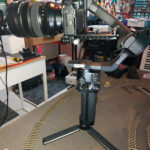
—Right-Side-45-Degree-150x150.png)

